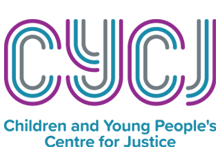The CYCJ roadshows involve our team travelling to locations across Scotland to meet with and deliver training to youth justice practitioners working in local authorities, voluntary sector organisations, residential settings and other relevant areas. In this blog post, CYCJ’s Stewart Simpson explains what the Managing High Risk roadshow entails, and how it can benefit practitioners.
Over the past year at CYCJ, we have been reviewing our range of roadshow topics and adding additional themes based on feedback from stakeholders and partners.One example is the creation of a specific roadshow designed for Criminal Justice staff, taking a ‘what you need to know’ approach about working with adolescents. Over the coming months, the CYCJ team will further explore the different roadshow topics and their contents and benefits for staff, through a series a blog posts. To kick things off, we are going to explore the ‘Managing High Risk’ roadshow this month, followed by ‘Core Skills in Working with Adolescents’ in October.
The Managing High Risk roadshow explores theories behind working with the small but significant cohort of young people who present with high risk behaviours including violence or harmful sexual behaviour, as well as considering the range of appropriate assessment and risk assessment tools that should be used with this group.
So far in my career in Youth Justice, I have been on ASSET, SAVRY, JSOAP-II, AIM2, START and Safer Lives training (as well as the ‘training for trainers’). Whilst all these tools are good “tools in the tool box” there is always a need to think about, how do I use these? Why do I use these? Followed by so, what do I do next?
From my time in practice, the good old days of finding something like the “high risk masterclass” advertised in the CYCJ bulletin was always something that lead a bit of contest as to who would get to go. Not because we were all starstruck seeing David Orr or Stuart Allardyces’ names on the programme (although I hear there are such people out there). But because it was an opportunity to think about what it is that we do with young people, and how we can put this into a bit of a context in terms of learning in relation to the aforementioned tools. Also, it was an opportunity to sit without a phone going in your ear or someone telling you one of your cases has just “kicked off”, and reflect on some of the challenges with your cases.
Thinking about this now, the local connect would sometimes get lost at regional events. Having seen the roadshow in action over the past year, I have seen some additional benefits in these being more localised. More and more so, our roadshows are multi-agency, reflecting changes in practice and how we are now GIRFEC-ing everything we do. Partly I am looking forward to going back to practice in the future to be on the other end of a roadshow, to be able to spend the time with colleagues thinking about some of the material from a presentation and having the opportunity to say…so what does this mean to us here?
So, in theory, now that I have sold you all on the idea of roadshows and their benefits , it’s probably about time to think about the “high risk” theme and what we have done so far.
In May, we looked at defining violence, trauma and attachment theory, in this context, at a roadshow in the Highlands. Feedback from this event was that thinking about how we can become more attachment and trauma focussed in our work (whether that is in relation to sexual behaviours or violent behaviour) is crucial.
A one-day roadshow planned for October will look at interfamilial violence, trauma and the application of strength-based theories in working with violent young people. From my experience, I dare not count the number of times where I was allocated a “high risk” young person in the past where they were either difficult to engage with, or once I had built up a relationship, my thought was right, what now? This roadshow aims to help the practitioners attending think about some of the skills they have already learned over time to engage young people, whether that is thinking about things you can do that will be “quick wins” or whether that is thinking about your approach and use of language. Following on from that, we will then address the ‘what now?’ question and think about trauma, the role of family and personal factors that contribute to young people becoming involved in violence.
So far, the challenges posed by both requests for high risk roadshows have been interesting with different staff needs highlighted. I look forward to seeing more requests and more challenges from practice for “high risk” roadshows in the future!
If you think your area would benefit from a roadshow, and you have identified a training need, please contact us to discuss this further via cycj@strath.ac.uk.

Leave a Reply
You must be logged in to post a comment.